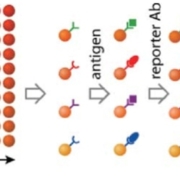How the Difference Between Biodegradable Waste and Non Biodegradable Waste Impacts Recycling
Waste segregation has become one of the biggest challenges in modern cities. With growing awareness about sustainability, people are asking an important question: what really is the difference between biodegradable waste and non biodegradable waste, and how does it affect recycling? Understanding this difference is not just academic—it directly impacts how efficiently we can manage our resources and reduce the burden on landfills.
What Is Biodegradable Waste?
Biodegradable waste refers to organic materials that can naturally decompose with the help of microorganisms such as bacteria and fungi. These materials break down into carbon dioxide, water, and nutrient-rich compost without leaving harmful residues in the environment.
Biodegradable Waste Examples
- Food scraps (vegetable peels, fruit leftovers, grains)
- Garden waste (leaves, grass clippings, branches)
- Paper, cardboard, and natural fabrics like cotton or jute
- Wood and agricultural residue
Because they return to nature without causing long-term harm, biodegradable materials play a vital role in composting and soil enrichment.
What Is Non Biodegradable Waste?
On the other hand, non biodegradable waste is made up of substances that do not break down naturally or take hundreds of years to decompose. This type of waste often accumulates in landfills, oceans, and the environment, causing pollution and health hazards.
Non Biodegradable Waste Examples
- Plastics (bags, bottles, packaging material)
- Metals like aluminum cans, steel products
- Glass bottles and ceramic items
- Synthetic fabrics (polyester, nylon, acrylic)
- Electronic waste (batteries, mobile phones, appliances)
Unlike biodegradable materials, these wastes need recycling or special treatment methods to prevent environmental damage.
The Difference Between Biodegradable Waste and Non Biodegradable Waste
The difference between biodegradable waste and non biodegradable waste lies in their decomposition process. Biodegradable waste is naturally broken down into harmless matter, while non biodegradable waste resists natural breakdown and remains in the environment for decades or even centuries.
From a recycling perspective:
- Biodegradable waste is best suited for composting and organic recycling.
- Non biodegradable waste requires mechanical or chemical recycling processes like plastic shredding, glass melting, and metal reprocessing.
This difference influences how we design waste management systems and why segregation at the source is crucial.
Impact on Recycling Systems
1. Composting and Organic Recycling
When biodegradable waste is segregated correctly, it can be turned into compost or biogas. For example, kitchen scraps and garden clippings can produce natural fertilizer that supports urban farming and reduces the need for chemical alternatives.
2. Challenges with Mixed Waste
If biodegradable and non biodegradable waste are mixed, recycling becomes difficult. Food waste sticking to plastic containers or paper mixed with oily residues reduces their recyclability, leading to more waste being dumped in landfills.
3. Recycling of Non Biodegradable Waste
Non biodegradable waste like plastics, metals, and glass can be recycled multiple times, but only when kept clean and separated. For instance, plastic bottles can be shredded and reprocessed into packaging or textiles, while metals like aluminum are infinitely recyclable without losing quality.
4. Environmental Burden
When the two types of waste are not separated, non biodegradable items often end up in open dumps, causing pollution. Biodegradable waste in landfills releases methane gas, a major contributor to climate change. Proper segregation ensures that each type of waste is directed to the right recycling channel.
Why Waste Segregation Matters
Understanding the difference between biodegradable waste and non biodegradable waste is key to effective waste management. Segregating waste at home, schools, and industries helps in:
- Reducing landfill pressure by recycling plastics, metals, and glass.
- Generating organic manure from biodegradable waste through composting.
- Lowering pollution levels in soil, air, and water.
- Saving energy and resources by reusing non biodegradable materials.
- Promoting circular economy practices, where waste is converted into valuable resources.
Practical Tips for Managing Waste at Home
- Keep two bins – one for biodegradable waste (food scraps, paper, garden waste) and another for non biodegradable waste (plastic, glass, metal).
- Compost at home – Use a compost bin for kitchen and garden waste to create natural fertilizer.
- Clean recyclables – Rinse plastic containers, bottles, and tins before disposing them in recycling bins.
- Say no to single-use plastic – Reduce dependency on non biodegradable items like disposable cutlery and packaging.
- Reuse wherever possible – Convert glass jars, old newspapers, or fabric into reusable household items.
Conclusion
The difference between biodegradable waste and non biodegradable waste goes beyond textbook definitions—it directly impacts how we recycle and protect our environment. Biodegradable waste can return to the earth as compost, while non biodegradable waste must go through industrial recycling processes to prevent pollution.
By segregating waste, choosing compostable alternatives, and supporting recycling initiatives, we can create a cleaner, greener, and more sustainable future. The responsibility starts at home, but its benefits extend to the entire planet.





